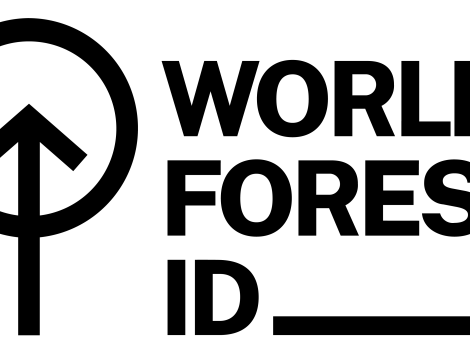

News | 04.02.2022
A visit from World Forest ID to the ATIBT gave us an insight into this interesting approach.

Overview
Tackling global deforestation and degradation requires that the actors involved in global supply chains have the means to accurately verify the identity and geographic source of both timber and deforestation-related agricultural commodities.
There is legislation around the world requiring organisations involved in trading timber to ensure it is legal and multiple voluntary certification schemes[1] designed to ensure timber originates from well-managed sources. New, more rigorous regulations are being considered in Europe, the UK and the US. All the current control mechanisms rely on reviewing documents describing the sale and purchase of goods between organisations in the supply chain, because there is little to be learned by looking at the timber itself. With modern information technology - it is simple to produce false documentation, and the process is prone to errors. It’s easy to cheat and hard to catch.
World Forest ID solves this problem by making it possible to determine the origin of the timber directly. State-of-the-art technologies now make it possible to use the chemical information contained in plants to identify, accurately and reliably, the species and origin of a product—all with just a small sliver of material. Historically, the biggest hurdle to using these technologies, such as stable isotope ratio analysis (SIRA) and Direct Analysis in Real Time mass spectrometry (DART), has been the lack of available chemical reference datasets from forests and agriculture fields around the world, which could be used as a global reference - a “map” of sorts. Such reference maps would allow the testing and matching of products to the origin from where they were grown.
Collecting samples
World Forest ID needs lots of reference samples. As a generalization, more samples equals better data, higher resolution, and more accuracy, but at a higher cost - for the collection and analysis. It is also important to collect them carefully - keeping note of the type of tree and precise location. Each sample will then need to be sent to more than one laboratory - clearly identified and without contamination - to ensure data quality.
World Forest ID has worked with the University of Tennessee to develop software specifically to support the reference sample collection process. The tool works on a smartphone and guides the user through the whole sampling process, whilst making use of the camera and GPS tracking features to identify and locate the tree. Sample collectors are also provided with sealable bags and unique barcode labels to avoid contamination and ensure correct identification at the lab. Sample collectors are being recruited from the many organisations that already send people into forests - including independent auditors for the voluntary certification schemes, forest workers, forest community members, and research scientists.
All reference samples are sent to the Royal Botanic Gardens at Kew (a World Forest ID partner organisation) for processing. Kew has an international reputation for plant science and hosts some of the largest curated collections of plant material in the world - including the Millennium Seed Bank. They have deep experience of receiving, handling, identifying and storing plant material - a complex business that requires government licensing as well as highly specialised skills and knowledge.
Analysis and building the reference database
All living organisms consist of the ‘life’ elements - hydrogen, carbon, nitrogen, oxygen - with a little phosphorus and sulphur. In trees, these elements are formed into a wide variety of structures such as cellulosic material (up to 75% of the total), lignin (up to 35% of the total), ‘extractives’ (up to 20% of the total) and ash (around 1%). The proportions of each, and their specific structures, are indicative of the type of tree - oak trees are quite different to maples and poplars. Modern analytical techniques can make use of these differences.
There are always these chemicals present in products manufactured from plants. These structures were ‘built’ by the tree - via photosynthesis - using local sources of life elements absorbed from the land, water and air. Mass spectroscopy uses high energy electrons to break apart those structures - forming electrically charged fragments. Under controlled conditions, identical structures break apart consistently producing predictable and unique fragmentation patterns. Being electrically charged, the fragments can be propelled through space using electromagnetic force. Since the speed at which they move is directly proportional to their size and their electrical charge it is possible to determine the original structures in the timber by measuring how long it takes for all the fragments to travel a set distance - their ‘time of flight’. In addition, the local sources of life elements exhibit measurable variation from place to place, making it possible to determine where the tree grew, often to within less than 50 km.
Bringing it all together
World Forest ID has been created to bring all the required components together in a coherent, and reliable global service. From designing the reference sample collection programme, to building a global network of qualified laboratories and developing the terms and conditions under which samples are analysed to ensure the reference data is maintained over the long term as a ‘public good’ and made available to global supply chain actors, enforcement agencies and researchers the World over.
Indeed, it is the configuration of World Forest ID that is so important and compelling. This is a global collaboration project, connecting the dots between existing technologies and institutions, using open data techniques and standards to provide an invaluable service to global timber and indeed planet Earth.
World Forest ID has built wood sample collections for over 100 species from 21 countries. It has expanded its work to collect samples of soy, cocoa, and coffee to support the use of science-based traceability for both wood and forest-risk commodities. Tracing wood and these commodities using stable isotopes is included in the legislation that is being considered by the European Union. It is thus important that those involved in the wood industry understand how these technologies work and where the can be applied.
To get involved and know more about World Forest ID activities, register to the next webinar presentation scheduled for March 2nd 4pm Paris time. World Forest ID will be happy to answer all your questions. We will provide you with more information in a future newsletter.
[1] Voluntary certification schemes include Forest Stewardship Council (FSC), Programme for the Endorsement of Forest Certification (PEFC), Sustainable Forestry Initiative (SFI) and others.
tag(s) :